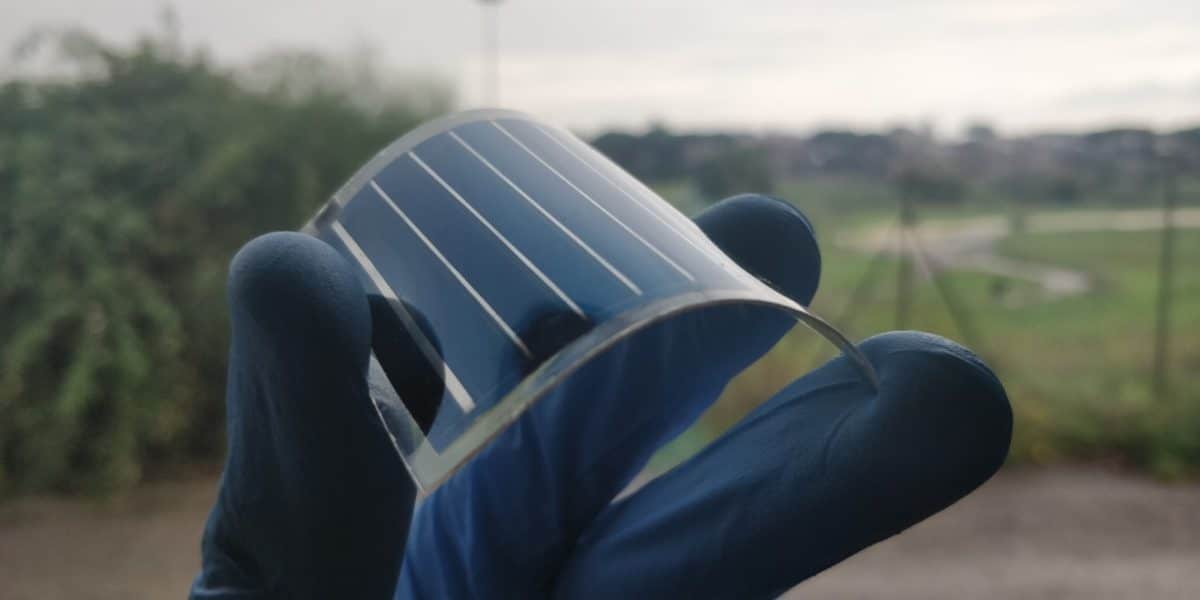Researchers at the University of Rome Tor Vergata in Italy have unveiled a flexible solar module based on perovskite with an active area of 15.7 cm2.
“It is the first flexible perovskite module that shows stability under light exposure,” Luigi Angelo Castriotta, a researcher at the university's Centre for Hybrid and Organic Solar Energy (CHOSE), told pv magazine. “It can be used for applications in building-integrated photovoltaics (BIPV), Internet-of-Things (IoT), and e-mobility.”
The methylammonium-free inverted solar module was built on a flexible substrate made of polyethylene terephthalate (PET). A hole transporting material made of poly(triarylamine) (PTAA) and a double-cation cesium formamidinium (CsFA) perovskite layer were deposited through blade-coating and nitrogen-assisted blade-coating. A two-minute oxygen plasma treatment was performed on the PET substrate prior to layer processing.
“PTAA and perovskite deposition by blade-coating are proposed as the main ways to boost the light stability by limiting the charge losses occurring at the PTAA/perovskite layer,” the Italian group explained, noting that the PTAA layer was optimized using anisole instead of toluene as a solvent in air and clean-room environment.
The solar module showed a power conversion efficiency of 10.5%, an open-circuit voltage of 8.26 V, a short-circuit current of 18.48 A and a fill factor of 55.03%. The panel is described as the most stable large-area perovskite module reported to date. “The use of scaling-up techniques, such as a blade-coating process, in the field of perovskite opens a feasible path to further increase the stability of flexible modules while keeping this technology repeatable, cheaper, and suitable for flexible solar panel technology,” the academics affirmed.
Looking forward, the research team is planning to investigate the recovery process of the devices under dark conditions through light/dark cycle tests. The panel is described in the study “Light-Stable Methylammonium-Free Inverted Flexible Perovskite Solar Modules on PET Exceeding 10.5% on a 15.7 cm2 Active Area,” published in ACS Applied Materials & Interfaces.
In March, the University of Rome Tor Vergata also presented a perovskite solar module with a total active area of 42.8 cm2 and aperture area of 50 cm2. The panel was built with 20%-efficient perovskite cells connected in 14 series and was able to retain 90% of the initial efficiency after 800 h of thermal stress at 85 degrees Celsius.
Later in June, it unveiled a perovskite solar module with cells based on triple-cation cesium methylammonium formamidinium (CsMAFA).
This content is protected by copyright and may not be reused. If you want to cooperate with us and would like to reuse some of our content, please contact: editors@pv-magazine.com.




By submitting this form you agree to pv magazine using your data for the purposes of publishing your comment.
Your personal data will only be disclosed or otherwise transmitted to third parties for the purposes of spam filtering or if this is necessary for technical maintenance of the website. Any other transfer to third parties will not take place unless this is justified on the basis of applicable data protection regulations or if pv magazine is legally obliged to do so.
You may revoke this consent at any time with effect for the future, in which case your personal data will be deleted immediately. Otherwise, your data will be deleted if pv magazine has processed your request or the purpose of data storage is fulfilled.
Further information on data privacy can be found in our Data Protection Policy.